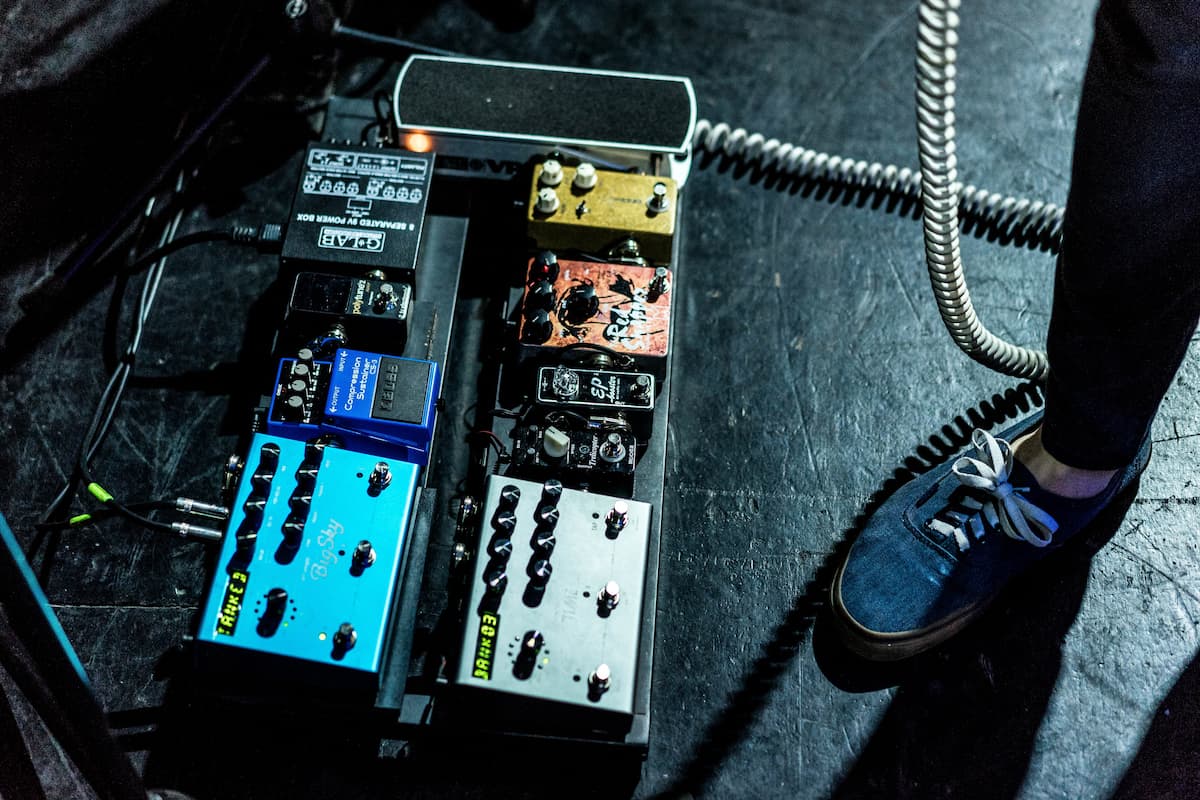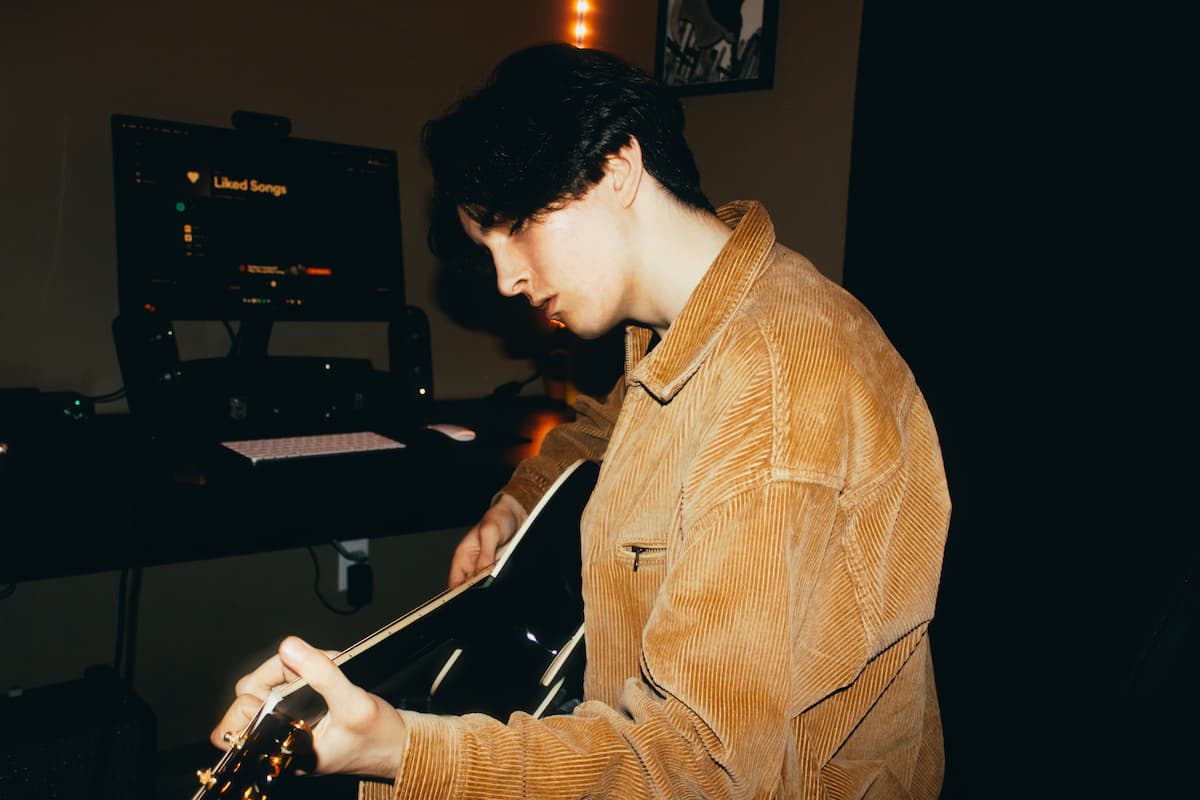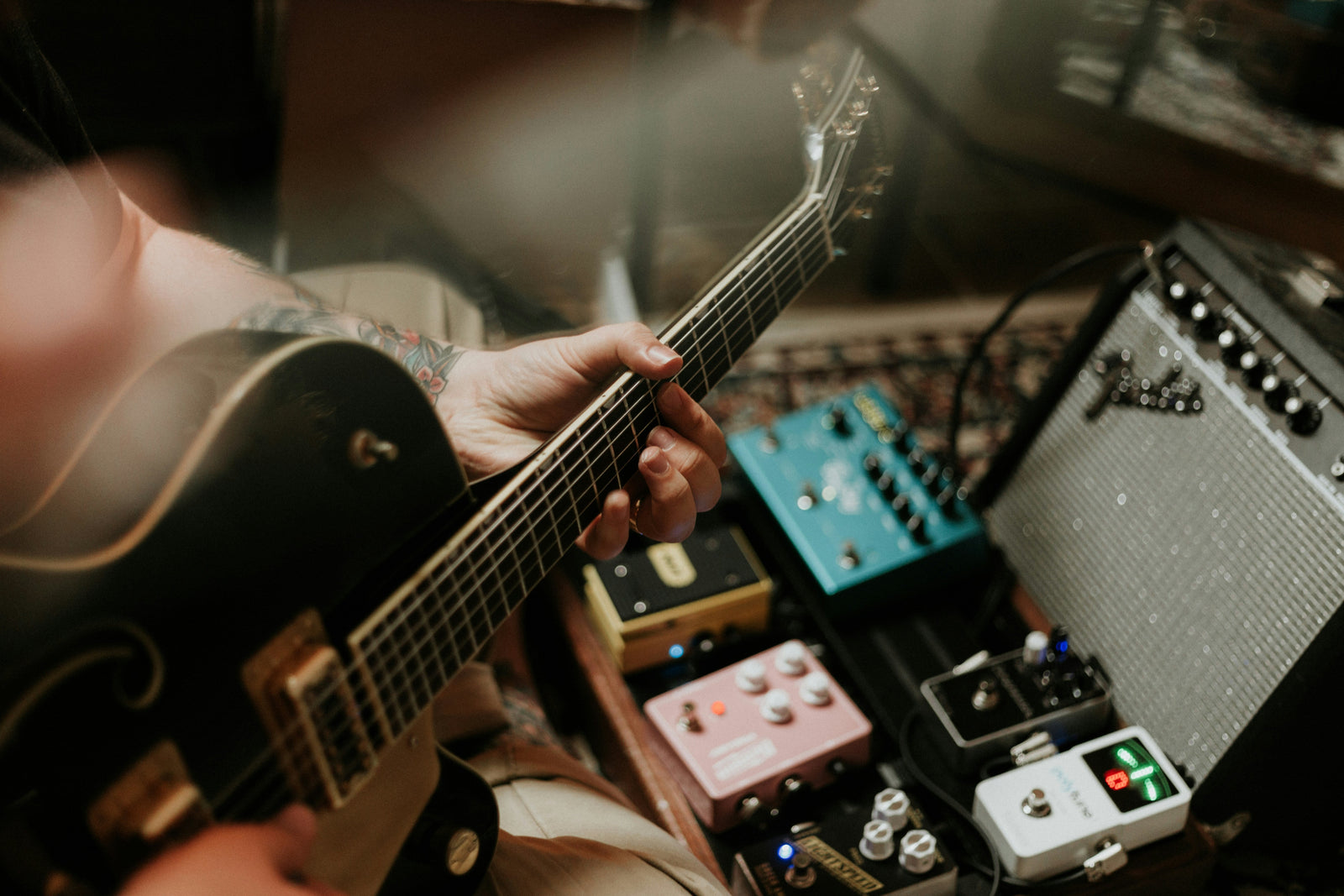BOSS Guitar Pedals Overview: Dynamics/Filter
For decades, guitarists have shaped their sound with guitar pedals. Luckily, the options for BOSS guitar pedals keep growing. Whether you're a beginner or a pro, BOSS offers diverse guitar pedals to match your needs. Pedals aren't for effects alone; they control your live guitar sound. Also, tweaking dynamics or adding distortion and modulation.
From beginners to world-famous players, musicians rely on these guitar pedals. For a pro-quality guitar tone. These magic buttons are easy to install and fit into any setup you prefer. Among the sea of guitar pedals, some become indispensable tools for every guitarist.
What Are BOSS Guitar Pedals Dynamics?
BOSS Guitar Pedals dynamics focus on volume control, minimizing surges, and maximizing output. These pedals manage volume fluctuations, balancing uneven sounds or song sections.
Beneficial for guitarists, dynamics effects alter volume and tackle variations. Distortion maintains a riff's prominence, overcoming mix issues amid increased volume. BOSS guitar pedal dynamics cater to musicians seeking consistent volume or dynamic adjustments.
These pedals are perfect for leveling sound variation. In the vast world of pedals, BOSS dynamics become indispensable tools for every guitarist's arsenal.
Why You Should Get A BOSS Guitar Pedals Dynamics?
For musicians seeking dynamic effects, BOSS guitar pedals excel. Renowned for top-notch products, BOSS leads the industry.
Addressing volume challenges, these pedals ensure a consistent sound. This factor is crucial for live performances. BOSS guitar pedal dynamics are essential for balancing volumes. This is essential in songs with varied sections.
In the modern guitarist's signal chain, dynamic effects play a crucial role. They prevent amplifier chaos and offer instant solutions for playing diverse-volume songs. BOSS guitar pedals stand as essential tools for any guitarist's sonic arsenal.
How to do BOSS Guitar Pedal Dynamics Work?
Dynamic effects enhance the listening experience, but proper usage is crucial for coherence. Beginners may find dynamics confusing, often unaware of their sound-altering impact.
Turning dynamics on/off can create an imbalance. When on, the music feels lacking, and off affects the bass. Identifying changes induced by these pedals might be challenging. Yet, they impact audio quality.
Keyboard players grasp dynamics' importance; mishandling volume can cause feedback. Gentle touches can transform sound into a powerful, synth-like texture.
Elements of Dynamics Guitar Pedals
Several terms could describe dynamic effects. “Dynamic”, “Expression”, “Gain”, and “Fader” are among the most common. These all describe similar features, but there are differences in these effects.
Let's start by having a look at what we can find in the different types of pedals.
1. The Threshold
The "threshold" is the master control, marking where the processor affects the audio. Think of the threshold as a line your sound wave crosses to become distinct.
2. The Attack
The "attack" measures the speed at which the effect reaches the most gain reduction. This defines how fast or slow the sound fades after removing your hand.
3. The Ratio
The "ratio" indicates the rate at which the effect alters or amplifies volume. Invaluable for creative use, ratios range from 1:1 (no effect) to infinite.
Contrast quiet and loud passages by applying a compressor. Raising levels with a gradual shift.
4. The Release
The "release" time, in milliseconds, determines how the effect recovers after engagement. It becomes relevant if the effect persists after crossing the threshold.
You won't worry much about the release setting in regular use. If noise occurs during consecutive notes, increase the release value toward infinity.
Dynamics effects manage volume, essential for guitarists dealing with fluctuations. They ensure a consistent sound during live shows, maintaining a pleasing level. Top guitarists rely on dynamics pedals for a professional, balanced sound.
These small devices play a significant role in crafting your amplifier's tone. Taming volume variations become seamless with the right dynamic effects.
Guitarists experience the most enjoy these dynamic effects. BOSS guitar pedal dynamics offer an instant solution for a guitarist's tonal needs.
What Are The Types of BOSS Guitar Pedals Dynamics?
Most pedals today are dynamic, and choosing the right one can be challenging when you start.
1. Compressor Guitar Pedals
Compressor guitar pedals are crucial for managing volume variations in your music. These dynamic effects attenuate loud signals and boost softer ones. It helps to create a balanced tone. Regardless of your music genre, they play a fundamental role in shaping your sound.
Also known as volume or gain pedals, they make soft parts louder and loud sections softer. This versatility is particularly valuable in genres like country and folk. Ensuring you don't overpower your audience.
Compressors reduce the dynamic range of your audio signal. Amplifying quieter notes while preserving audible ones. This is essential for maintaining consistency in your playing. Especially in songs with uniform volume levels or when collaborating with other musicians.
2. Volume Guitar Pedals
Volume guitar pedals, among the simplest effects, are essential for guitarists. Generating volume swells into an amplifier isn't possible. To address this, a guitarist can use a volume pedal controlled by their feet.
When plugging in your guitar, imagine cranking up your amp's volume knob. Adjusting the guitar's volume control takes time, especially during a solo. Here's where volume pedals, also known as "volume swells," come to the rescue. They offer a workaround through simple mechanics.
A volume pedal manages your signal's output volume with precision. Aiding in simulating movements like fading in or out and swelling. This pedal's versatility addresses volume challenges.
3. Boost Guitar Pedals
Boost pedals are straightforward devices that amplify your guitar's signal. They amplify signals without introducing extra effects. The term "boost" refers to a type of volume increase, distinct from overdrive or clean boost.
These pedals serve a singular purpose. Increasing your guitar's volume while preserving its tone. When seeking a boost pedal, it's crucial to test it on an already overdriven amp. To ensure a noticeable tonal difference.
Boost pedals are invaluable for helping your guitar cut through the mix. They shine in band performances. They function in contrast to distortion pedals, which decrease both volume and tone. Their simplicity and focused role make them practical.
BOSS Guitar Pedals: Dynamics
TOP BOSS Guitar Pedal Dynamics:CS-3 Compression Sustainer
The BOSS CS-3 Compression Sustainer pedal is a dynamic tool. It levels out your sound by compressing louder signals and boosting softer ones. Ensuring your playing maintains its original sound quality, even with smooth sustain.
Ideal for beginners and pros, it gives enhanced sustain and balanced string response. It's designed to deliver a punchy tone at any volume. This pedal ensures your sound is full and dynamic, whether on stage or in the studio.
The CS-3 is easy to use with intuitive controls. Making it suitable for various musical situations. It's a valuable asset for recording, offering a balanced and polished tone. This pedal works well alone for a clean sound or combined with distortion, chorus, or wah pedals.
- Enhances sustain and balances string response for a full sound.
- Perfect for recording with its ability to polish and clarify tone.
- Complements other pedals like distortion and chorus for versatility.
The CS-3 helps musicians at all levels achieve a consistent, full sound. It's particularly effective in enhancing performance quality. Whether you're playing live or laying down tracks in the studio, the CS-3 is a reliable companion.
This pedal is a testament to BOSS's commitment to quality and innovation. It's an essential tool for anyone looking to refine their sound and sustain. With the CS-3, achieving a professional, well-rounded sound is more accessible than ever.
What Are BOSS Guitar Pedals Filter?
BOSS guitar pedal filters are unique electronic tools. They create distinct sounds when you press the pedal. Their primary role is to change the tone. Setting them apart from effects that adjust volume or pitch.
These pedals come in various types, catering to diverse sound preferences. Regardless, they share a common process. These processes involve decimating the original signal. Then, filtering and resynthesizing it before amplification.
Filter pedals empower your guitar to produce fascinating, distinctive sounds. Often known as all-pass filters. They allow all sound frequencies to pass through without compromising the quality.
Filter pedals are versatile tools, enabling creative tonal shaping for your guitar. Effective across the majority of genres, they particularly shine in funk-playing styles. They add a unique touch to musical expressions.
Why You Should Get A BOSS Guitar Pedals Filter?
Filters alter a sound's frequency spectrum, making them versatile for tone modification. They are particularly renowned for their impact on funk and psychedelic rock genres. Their ability to shape the guitar's tone adds a unique and creative dimension to sounds.
Embracing a BOSS Guitar pedal filter enhances your sonic palette. Allowing you to experiment with diverse tones and stand out in your expressions. Whether you're delving into funk grooves or exploring psychedelic rock vibes. These pedals offer a dynamic and indispensable tool for your musical journey.
How Do Filter Guitar Pedals Work?
A filter stompbox generates new frequencies. They often adjust or boost them within a specific range. In a low-frequency equalizer, this pedal modifies frequencies, introducing a greater signal.
The basic filter types include high-pass, low-pass, and bandpass. Each regulates different frequency ranges. High-pass allows frequencies above a set point. The low pass permits those below, and the bandpass enables a specific range.
Beyond these, filter pedals offer creative options. These are harmonic, reverse, comb, and notch filters. These versatile tools empower guitarists to shape their sound. Also, adding richness and uniqueness to their musical expressions. Experimenting with various filter types opens doors to a spectrum of tones.
Kinds of Filter Guitar Pedals
1. Low-Pass Filters:
Low-Pass Filters (LPFs) are fundamental in shaping sound. They allow higher frequencies to pass while cutting out lower ones. Originating in recording equipment and analog samplers. The LPFs limit bandwidth for specific instruments or voices. Musicians often use LPFs to achieve the desired sound. Manipulating them to craft their unique audio signature.
2. Band-Pass Filters:
Band-pass filters work by expanding amplitude over a large surface area. For instance, doubling your amplitude sweeps up to twice the original frequency range. These filters are selective, passing frequencies within a specific range. They are invaluable for creating focused and precise sound profiles in music.
3. High-Pass Filters:
High-Pass Filters come into play when you want to cut unwanted low frequencies. These filters are adept at cutting off higher frequencies above a set point. Then, attenuating lower ones. They are essential for clarifying your audio signal. Removing muddiness and ensuring a cleaner sound.
4. Band-Reject Filters:
Band-Reject, or notch filters, block specific frequencies within the spectrum. Used in synthesizers, they help in removing high-frequency noise or low-frequency rumble. This results in a cleaner, more pleasant sound, enhancing the audio experience.
Filter pedals, including these four types, are versatile tools for musicians. They allow for a wide range of sound manipulation and enhancement. Utilizing these filters can improve the quality and character of your music.
Each type of filter pedal offers unique benefits. Making them vital for a well-rounded pedalboard. With these filters, you can tailor your sound to fit any musical style or preference.
What Are The Types Of BOSS Guitar Pedals Filters?
1. Wah Effects Pedals:
Wah pedals, a type of filter pedal, allow musicians to sculpt specific frequencies. They can either amplify or attenuate various sounds. Unlike standard pedals, wah pedals come with an adjustable frequency control. This feature enables guitarists to highlight different sound frequencies.
Wah pedals may seem straightforward but mastering them takes skill. A quality wah pedal transforms your guitar's tonal response. It serves as a modulation source. This results in unique sounds that enrich rock and metal music. Wah pedals change how your playing dynamics interact with sound waves.
2. Auto-Wah or Envelope Effects Pedals:
Envelope filtering is a dynamic effect controlled by input signal amplitudes. This modulates the filter frequency and other parameters. Giving a preview of the upcoming sound. Envelope filters often feature low-pass filtering with high resonance. They can modulate frequency cutoffs with fast sweeping or slow detuning. These filters react in real-time or at audio speed, maintaining the filter type.
The versatility of envelope filters expands your instrument's expressive capabilities. With adjustable rate and sweep speed, the musical possibilities are vast. Adapting and responding to your playing characterizes envelope filters.
3. Talk Box Effects Pedals:
The talk box is an age-old effect, dating back to early rock and roll. Guitarists had to play louder or softer due to the lack of input gain knobs on amplifiers. Eddie Van Halen popularized the term "talk box." It describes any device that uses the musician's voice as a sound source.
Talk boxes add vocal-like sounds to guitars, basses, and other instruments. They range from subtle to exaggerated effects. You can use talk boxes live or in recordings, without needing much space or amplification. These pedals are compatible with various recording equipment. Making them versatile for different settings.
BOSS Guitar Pedals: Filter
TOP BOSS Guitar Pedals Filter: EQ-200 Graphic Equalizer
The EQ-200 stands out as a flexible EQ pedal, ideal for both guitar and bass. It boasts two extensive 10-band EQ channels. The onboard graphic display provides a clear view of your current EQ settings.
This pedal's signal flow is adaptable for various setup needs. You can configure the channels for stereo, parallel, or series operation. Its flexibility allows for the integration of external pedals, offering comprehensive tone shaping.
- Varied signal flow structures for different sonic needs.
- Option to integrate external pedals for pre/post-EQ processing.
- Frequency centers are adaptable to suit various instruments.
The EQ-200’s design offers exceptional versatility in sound sculpting. You can link or use its A and B channels in isolation. Adding external pedals to the chain enhances its pre-EQ and post-EQ capabilities.
Used alongside overdrive and distortion pedals, the EQ-200 shines. It allows for precise tone change, essential for both rhythm and lead styles. In series mode, you can shape your basic tone with one EQ and refine it further with the second.
The EQ-200 is a powerhouse for musicians seeking detailed control over their sound. Its ability to adapt to different instruments and styles makes it a top choice. Whether on stage or in the studio, the EQ-200 provides unparalleled sound-shaping capabilities.
It's a testament to BOSS's commitment to quality and innovation. The EQ-200 Graphic Equalizer is not a pedal but a creative tool. Opening new realms of sonic exploration.
BOSS Guitar Pedals Dynamics and Filter
BOSS Guitar Pedals in the dynamics and filter categories are like fine-tuning tools. Think of dynamics effects pedals as a way to tweak your guitar's 'engine'. These pedals, often called level-changing pedals, ensure a consistent volume throughout your playing. They're essential for maintaining balance, especially during live performances.
Dynamic effects can also serve as volume boosters. These pedals help in shaping the presence of your guitar sound.
Now, let's delve into filter effects pedals. When you play the guitar, the prominent sound is noticeable. But what about the subtle undertones and nuances? That's where filter effects come into play. They are the secret behind those intricate sound variations.
Filter pedals are masters at transforming clean, amplified signals into distorted, lo-fi sounds. They allow you to explore a range of sonic textures, from smooth to gritty. These pedals can alter the character of your guitar's tone, adding depth and dimension.
With BOSS's dynamics and filter pedals, you have the power to sculpt your sound. Whether you're smoothing out your volume or experimenting with tonal variations. These pedals offer endless possibilities. They are vital for guitarists who want to add complexity and richness to their music.
BOSS pedals in these categories are not effects units. They are tools for creative expression. They enable guitarists to fine-tune their sound, bringing their musical vision to life.
BOSS Dynamics/Filter Guitar Pedals: AW-3 Dynamic Wah
The BOSS AW-3 Dynamic Wah pedal offers guitarists a variety of wah effects. It's versatile, catering to both classic auto-wah and dynamic wah styles. Unique to the AW-3 is the "Humanizer" effect, which can mimic human vowel sounds.
This pedal is not for guitarists. A dedicated Bass input provides funky wah sounds for bass guitars. It's a tool for any musician looking to add expressive wah effects to their playing.
- "Humanizer" effect for simulating human vowel sounds.
- Dedicated Bass input for versatile wah effects on bass guitars.
- Options for both fixed and auto wah settings.
Using the AW-3, guitarists can select between fixed and auto wah settings. The Manual control allows for precise adjustments. Or, you can use the pedal for tempo-based effects. By adding an optional expression pedal, the AW-3 transforms into a Pedal Wah. Offering even more control over the wah effect.
The AW-3's dynamic response to playing style makes it a standout. It reacts to your picking intensity, offering a range of tonal possibilities.
BOSS's AW-3 Dynamic Wah pedal is an innovative tool for both guitar and bass players. It brings a new level of expression to your music, from subtle nuances to pronounced wah effects. Its versatility and range of sounds make it a valuable addition to any pedalboard.
BOSS Dynamics and Filter Guitar Pedals: Conclusion
BOSS Guitar Pedals dynamics and filter categories are essential for music shaping. They offer a range of effects, from subtle volume control to distinctive wah tones. These pedals allow guitarists to fine-tune their sound. Enhancing both live performances and studio recordings.
With BOSS's commitment to quality, each pedal is a reliable addition to any musician. Whether for subtle refinement or dramatic effect. BOSS guitar pedals dynamics and filter are key to achieving the perfect sound.





